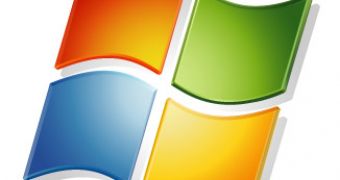If there is any doubt in you mind, Microsoft confirmed that it is WORKING on the next iteration of Windows, that will succeed Windows Vista. Windows 7... Yes, Windows Vista was number six. And yes, the next Windows iteration after Windows 7 will be... (are you ready for this?) Windows 8. This because of the product referencing strategy for developing projects that Steven Sinofsky, Senior Vice President, Windows and Windows Live Engineering Group, has imported over from Office. The Office 2007 System for example was Office 12, the next version of Office is Office 14, yes, Microsoft skipped the unlucky 13. Sinofsky is nothing more than the birth of translucency and the death of the product codenames.
Recently, there has been some confusion orbiting around Windows 7, brought by the general terms of a Microsoft statement on the operating system. "We are currently in the planning stages for Windows 7 and expect it will take approximately 3 years to develop. The specific release date will be determined once the company meets its quality bar for release," the company revealed to the WinVista Club.
When Microsoft announced Windows 7 in 2007 with a delivery deadline set within a three-year time frame from the availability of Windows Vista, it appeared that the company was pointing to 2010 for the next version of Windows. Concomitantly with the leaked details of the first development milestone of Windows 7, M1 Build 6.1.6519.1, the release date moved to the end of 2009. Following the statement released by the company to the WinVista Club, the launch was interpreted as having been pushed back to 2011.
So, what gives? 2009? 2010? Or 2011? Well, Sinofsky was brought at the helm of the Windows 7 project because of his reputation for meeting deadlines. 2011 is a risky date for Microsoft, it will almost repeat the gap between Windows XP and Vista, a move that Microsoft said it will never do again. 2009 and 2010 both manage to come within the three-year time frame since the release of Vista, considering both the business launch in November 2006 and the consumer availability in January 2007. But it's unlikely that Microsoft will want to miss the 2009 holiday season with Windows 7, just as it did with Vista back in 2006.
But what about the planning? What does it mean that Microsoft is currently in the planning stages of Windows 7? What is the actual status of Windows 7? Has work began yet on the platform? Have the first lines of code been written yet? Well, YES! Microsoft has even offered Windows 7 Milestone 1 to key partners for early testing, and is also dogfooding the next version of Windows.
Well Charlie Owen, PM on the Media Center team, has confirmed the fact that Windows 7 is being build as you read this (I took the liberty to add emphasis where necessary): "It was an incredibly busy time during all of these months (October 2007 - December 2008) from a day job perspective. Yes, we are working on the next version of Windows -- no surprise there. The ebb and flow of program management happened to be really flowing instead of ebbing during this time (not that there is much of an ebb anytime here at Microsoft, but there times when it is less busy than normal)."
But is the work on Windows 7 something of a novelty item? Has Microsoft just started developing Windows 7? No, again. Windows 7 has been under development for quite some time now. Case in point, the work being down to strip the Windows core of all dependencies and to produce the MinWin kernel. Microsoft Distinguished Engineer Eric Traut presented MinWin back in 2007, you have a video embedded at the bottom of this article, but Traut reveals that even as early as last year Microsoft was hammering away at Windows 7: "So I mentioned that we are working right now (again, this was 2007) on this thing called Windows 7. That's the codename for it, by the way. Some really creative person came up with the codename Windows 7." (take that Sinofsky!)

 14 DAY TRIAL //
14 DAY TRIAL //